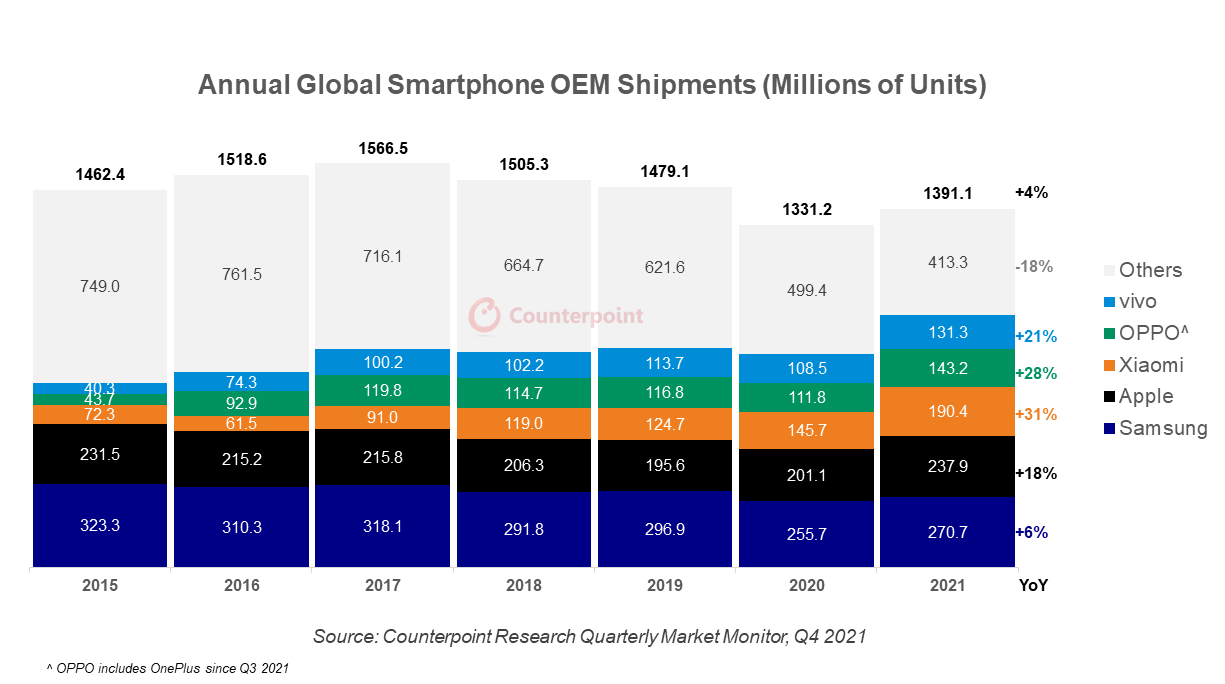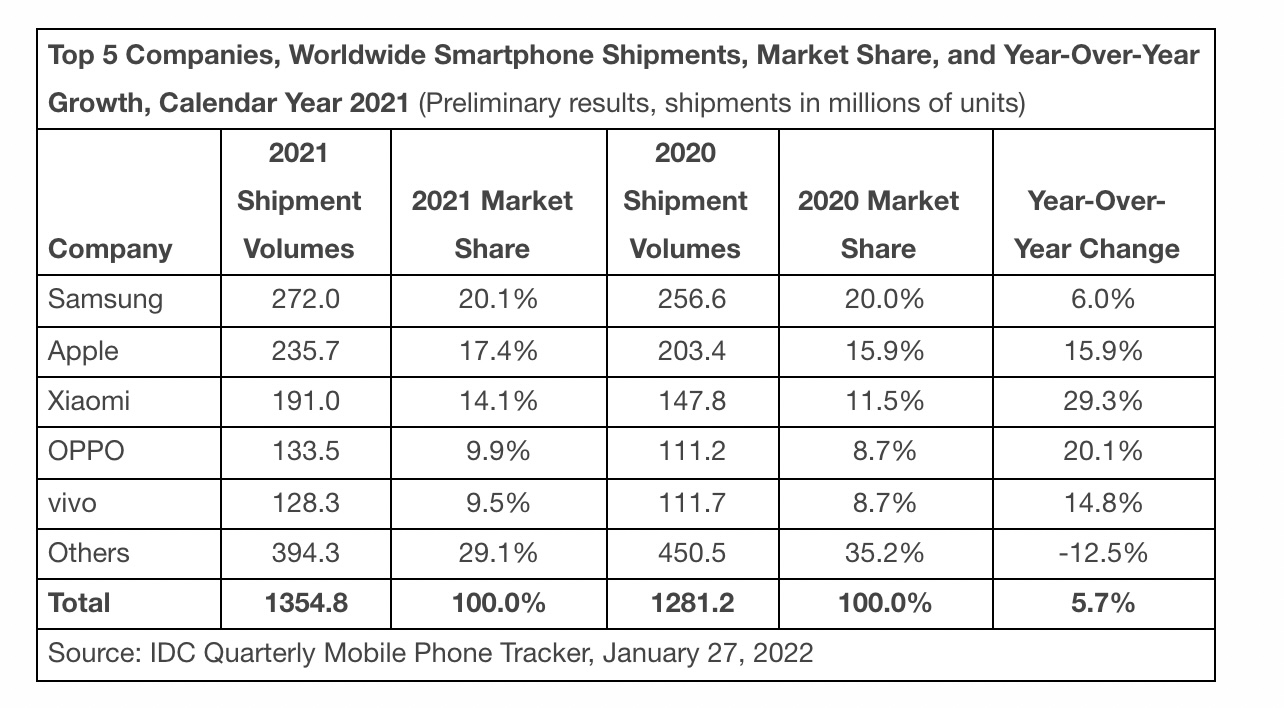Global smartphone shipments had already begun to decline ahead of 2020, despite the fact that two years of a pandemic, as well as the related supply chain and chip bottlenecks, did not assist the overall results. However, according to a pair of Counterpoint Research and IDC surveys, the industry actually enjoyed improvement last year for the first time since 2017.
The entire year-over-year growth rate, according to Counterpoint, is 4%, while IDC predicts 5.7 percent. Both corporations, however, forecast a fall in Q4, at 6% and 3.2 percent, respectively. Of course, the reduction was to be predicted given ongoing chip constraints, which have had a disproportionate effect on smaller producers with less supply chain clout than corporations like Apple and Samsung.
Both corporations ranked Samsung as the year’s top performer, with a 6% gain, and Apple as the year’s runner-up. The businesses also agree with a recent Canalys assessment that Apple won the quarter. Apple validated those sentiments with a strong quarterly profits announcement, fuelled in large part by the popularity of the iPhone.

The iPhone segment of the corporation increased its sales by 9% year on year to $71.63 billion. CEO Tim Cook stated that supply chain restrictions remained a challenge for the company, with demand outstripping supply in some areas, but added on a conference call that he expects challenges to continue to ease in the future. Such concerns, in the end, indicate to a market that might have otherwise returned more forcefully.
“The fact that 2021 would have come in significantly higher if supply limitations had not existed adds even more positivity to the robust 5.7 percent growth we saw for 2021,” IDC research director Nabila Popal said in a release. “It conveys the message to me that there is tremendous pent-up demand in practically all regions.” Even in China, where there are some concerns about deteriorating consumer demand, the market did significantly better than projected in the fourth quarter, 5% better to be exact, but still a year-over-year drop.”

While China is severely impacted by supply chain bottlenecks, the No. 2 and No. 3 smartphone markets grew in 2021.
“Growth in the United States was mostly driven by demand for Apple’s first 5G-enabled iPhone 12 series, which persisted throughout the year, concluding on a high Q4 owing to Black Friday and Christmas season promotions,” said Counterpoint analyst Harmeet Singh Walia. “India had a successful year as well, owing to greater replacement rates, improved availability, and more appealing financing options in mid-to-high-tier phones.”
Following nearly a decade of rapid expansion, demand began to fall prior to the pandemic, owing to slowing upgrade cycles, high pricing, and market saturation. COVID-19 exacerbated the recession by making customers less ready to spend. These challenges were aggravated further by supply chain concerns, while pent-up demand and developments like 5G have reignited interest, albeit total exports remain well below pre-pandemic levels.
Sources:
https://techcrunch.com/2022/01/18/apple-returns-to-no-1-as-global-smartphone-shipments-grapple-with-supply-chain-concerns/
https://techcrunch.com/2022/01/27/apple-hits-record-revenue-as-iphone-sales-defy-supply-chain-shortages/
https://techcrunch.com/2022/01/28/smartphone-shipments-grew-last-year-for-the-first-time-since-2017/
